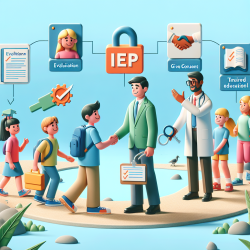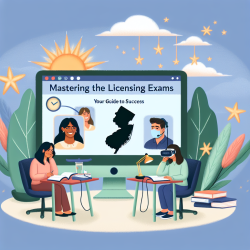Empowering Educators: Navigating Special Education Credentials and Placements
In the realm of special education, understanding the nuances of teaching credentials and student placements is crucial for educators, parents, and administrators alike. This blog delves into frequently asked questions about special education credentials, teaching assignments, and the concept of alternate placements. By shedding light on these topics, we aim to empower educators to provide the best possible learning environment for students with disabilities.
Graduation Credits for Math in Special Education
One common question is whether a teacher needs both an Education Specialist and a Single Subject Math credential to teach math for graduation credit in a high school special education setting. The answer is no. A special education credentialed teacher can teach any subject, including math, to students with disabilities in a departmentalized or self-contained setting, as long as they are appropriately authorized in the specialty area addressing the student's primary disability category.
Teaching American Sign Language (ASL)
For educators holding a Deaf and Hard-of-Hearing (DHH) credential, it's important to note that they are no longer authorized to teach ASL to general education students. However, those who were serving in such roles before July 1, 2010, may continue to do so, provided their previous employment in this capacity can be verified by their current employer.
Understanding Alternate Placements
Alternate placements refer to educational settings that may not align with a student's primary disability category. Special education teachers must have the appropriate authorization to provide services identified by a student's Individualized Education Program (IEP). While the IEP may outline multiple areas of need, federal statutes emphasize placing students in the least restrictive environment. An alternate placement might be determined suitable based on assessments and IEP goals, often aligning with Sec. 300.115 of the IDEA.
In cases where students with low incidence disabilities also have a secondary disability category, and the IEP suggests an alternate placement under the secondary category, the placement will involve a teacher with the appropriate specialty area. Nevertheless, the primary disability category needs must still be addressed as per the IEP. If a student only requires related services or none at all, a 504 plan might be more appropriate.
Teaching Physical Education in Special Education
Special education credentialed teachers are authorized to teach physical education to students with disabilities in a self-contained setting, provided they are appropriately authorized in the specialty area addressing the student's primary disability category. For departmentalized courses in Adapted Physical Education, educators need an Adapted Physical Education Added Authorization, regardless of their existing special education credentials.
Special Day Class and Resource Specialist Program
According to Education Code §56362(d), an educator cannot serve as both the teacher of record in a Special Day Class (SDC) and provide Resource Specialist Program (RSP) services during the same periods to the same group of students. This ensures that each role is dedicated to its specific responsibilities, maximizing the support provided to students.
Established Medical Disability (EMD)
The term Established Medical Disability (EMD) refers to a disabling medical condition or congenital syndrome that is highly likely to require special education and services, as determined by the IEP team. Educators should refer to specific charts to determine which credentials are authorized to serve students with this disability area.
For more information, please follow this link.










